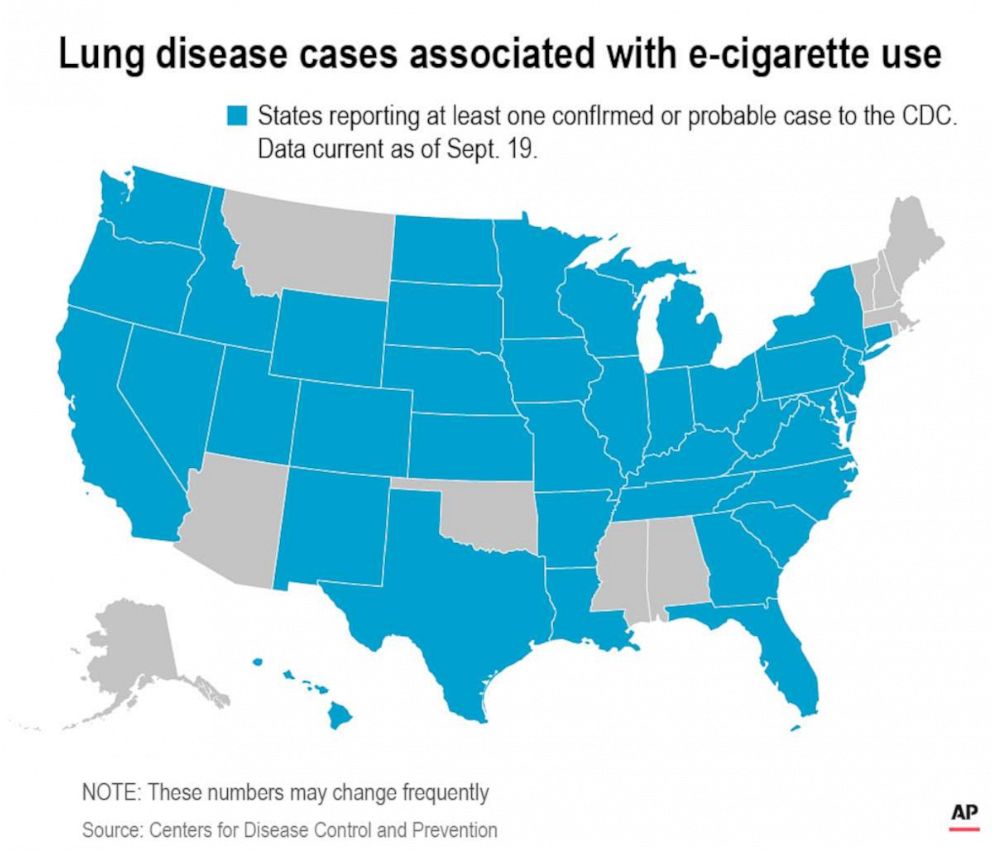Doctors fail to help teens quit smoking, study finds
Meanwhile, deaths and lung injuries linked to e-cigarettes continue to mount.
With eight deaths in the United States, one in Canada and a spat of vaping-related lung illnesses linked to e-cigarettes in recent weeks, public health officials are increasing pressure on retailers and parents to keep teenagers away from electronic smoking devices.
Yet despite serious risks, doctors aren’t doing enough to help young people quit smoking, a new study published Monday in the journal JAMA Pediatrics found.
"Nicotine is an extremely addictive substance, and with skyrocketing rates of e-cigarette use, we can expect that more and more teens will develop nicotine addiction in the years to come," said Dr. Nicholas Chadi, lead author of the study and a pediatrician at Boston Children's Hospital.
"Many young people who try to quit develop withdrawal symptoms and strong nicotine cravings, making stopping incredibly difficult," he added.

The study utilized Medicaid data from more than 80,000 patients between the ages of 10 and 22 who had been diagnosed with nicotine use disorder. Researchers found that of those patients, only 4% received counseling from doctors urging them to quit tobacco and only 1.2% were prescribed medication to help them quit smoking. Just 1 in 1,000 patients received both medication and counseling, treatments which are shown to significantly improve chances of quitting tobacco products among adults when administered in conjunction with one another.
While more research is needed to learn which interventions might be most effective for treating teens with nicotine use disorder, Chadi pointed to existing interventions like nicotine replacement gum, patches and lozenges as tools that pediatric health providers should consider to help young people quit using the addictive substance.
In the meantime, vaping among teenagers is on the rise, according to a government-funded survey released this month by the New England Journal of Medicine.
A quarter of high school seniors reported vaping nicotine at least once in the previous month, and vaping prevalence more than doubled for every age group between 2017 and 2019. Twelve percent of high school seniors said they smoked nicotine e-cigarettes every day.




